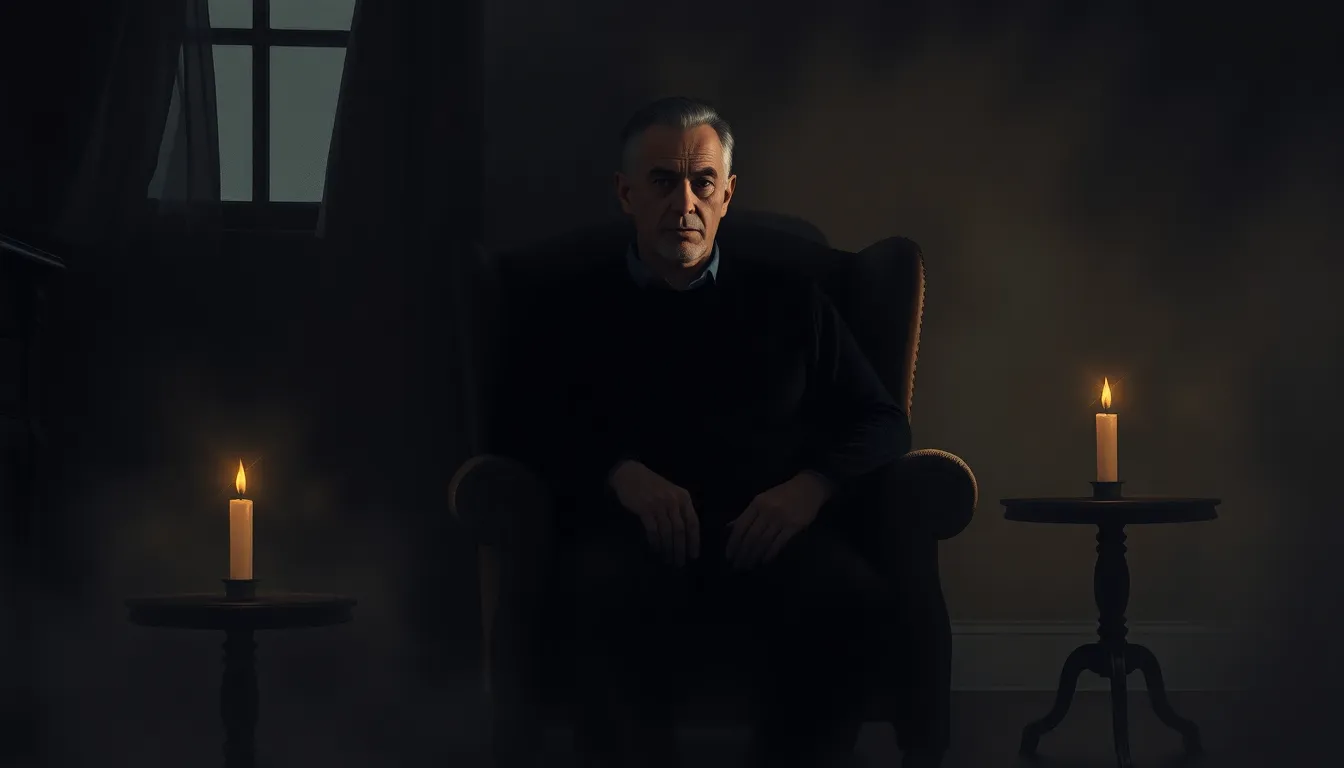In a world filled with sunshine and happy endings, the dark movie genre stands out like a raven in a field of daisies. It’s the perfect escape for those who crave a little thrill mixed with their popcorn. Whether it’s psychological thrillers, horror, or gritty dramas, these films invite viewers to explore the shadows of human nature, often leaving them both shaken and entertained.
Imagine diving into a chilling narrative where every twist leaves you gasping. The dark movie genre doesn’t just entertain; it challenges perceptions and provokes thought, all while keeping you on the edge of your seat. So grab your favorite blanket and prepare to embrace the darkness—because sometimes, the scariest stories reveal the most about us.
Dark Movie Genre
Dark movies encompass a variety of styles, including psychological thrillers, horror films, and gritty dramas. These genres often delve into complex themes, addressing the inherent darkness of human nature. Audiences engage with morally ambiguous characters that provoke deep reflection. Themes such as fear, guilt, and existential dread permeate storylines.
Sub-genres vary, featuring films that evoke intense emotional responses. Iconic examples include “Seven,” which explores obsession, and “The Sixth Sense,” known for its twist ending. Horror icons like “Psycho” offer a glimpse into the troubled psyche. Each film serves as a cultural mirror, reflecting societal anxieties and fears.
Dark narratives challenge norms and expectations, inviting viewers to confront uncomfortable truths. Cinematic techniques enhance the atmosphere, utilizing lighting and sound to evoke feelings of unease. Directors often employ symbolism to enrich the storytelling, adding layers to seemingly straightforward plots.
Character development remains crucial in these films. Complex protagonists and antagonists keep viewers invested in their arcs. Audiences often find themselves empathizing with characters who embody moral conflict, revealing gray areas in ethical dilemmas.
Critical receptions vary; some films achieve acclaim for their artistry, while others provoke debate over their content. Box office successes demonstrate the genre’s popularity, with many dark films becoming cult classics. This genre continues to resonate, captivating audiences craving thrilling and thought-provoking experiences.
Key Characteristics of Dark Movies

Dark movies stand out due to their intense exploration of complex themes and audacious visual styles. These characteristics help define the genre and deepen audience engagement.
Themes and Motifs
Dark films often delve into themes like mortality, guilt, and societal decay. Existential dread permeates narratives, challenging viewers to confront uncomfortable truths. Morally ambiguous characters serve as vessels for exploring the darker aspects of human nature. The struggle between good and evil often takes center stage, leaving audiences pondering their own ethical boundaries. Fear and paranoia also dominate many storylines, compelling viewers to question their perceptions of reality. Iconic examples, such as “Fight Club,” illustrate how these themes evoke deep emotional reactions.
Visual Style and Cinematography
Visual style plays a crucial role in dark movies. Dim lighting often sets a foreboding tone, creating an atmosphere of suspense. High contrast between shadows and light enhances emotional intensity, drawing viewers into the narrative. Cinematic techniques, such as close-ups, highlight character expressions that reflect inner turmoil. Color palettes frequently favor muted tones, reinforcing themes of despair and isolation. Unique angles and unconventional framing can evoke feelings of disorientation. Efforts like these make each film a sensory experience that lingers long after viewing.
Famous Dark Movies
Dark movies leave a lasting impression, often becoming benchmarks in the genre. They invite audiences to engage with unsettling narratives that evoke deep emotional responses.
Classic Dark Films
Classic dark films set enduring standards in storytelling and cinematography. “Psycho” (1960) redefined horror, introducing an unsettling atmosphere that keeps viewers guessing. Stanley Kubrick’s “A Clockwork Orange” (1971) explores themes of violence and free will, unsettling yet provocative. “The Exorcist” (1973) stands as a hallmark of supernatural horror, presenting themes of faith and fear that resonate. Those classics remain influential, shaping how dark narratives unfold even decades later.
Contemporary Dark Films
Contemporary dark films continue to evolve, reflecting societal anxieties. “Hereditary” (2018) dives into familial trauma and existential dread, leaving audiences on edge. “Joker” (2019) offers a chilling exploration of mental illness and societal alienation. “Get Out” (2017) engages with race relations through a horror lens, amplifying its societal critique. Each of these films exemplifies how modern storytelling can push boundaries while maintaining the core elements that define the dark movie genre.
Influence of Dark Movie Genre
The dark movie genre profoundly influences both cinema and society. It navigates complex emotional landscapes, encouraging audiences to confront difficult realities.
Cultural Impact
Dark films exert significant cultural influence, challenging societal norms and perceptions. They often spark conversations about mental health, morality, and justice. Iconic movies encourage viewers to dissect uncomfortable truths, reshaping how society understands issues like trauma and violence. By addressing taboo subjects, such films can incite meaningful dialogues within communities. Audiences find themselves relating to characters’ struggles, fostering empathy and awareness. Examples of such influence include discussions arising from films like “Joker,” which debuted in 2019, highlighting mental illness and societal isolation.
Evolution Over Time
The evolution of the dark movie genre reflects broader societal changes. Originally, classic horror films relied on shock value and straightforward narratives. Over time, filmmakers began to integrate psychological complexity and nuanced storytelling into dark films. The 1970s marked a turning point with movies like “The Exorcist,” introducing character-driven plots with lingering psychological impact. Today, modern entries like “Get Out” leverage social commentary, addressing contemporary issues such as racism and identity. This ongoing evolution manifests through diverse storytelling techniques and innovative cinematography, allowing the dark genre to maintain relevance in the ever-changing cinematic landscape.
Conclusion
The dark movie genre continues to captivate audiences with its exploration of the human psyche and moral complexities. Through its unique storytelling and striking visual styles, it invites viewers to confront their fears and societal truths. The genre’s ability to evoke strong emotional responses ensures its lasting impact on both cinema and culture.
As filmmakers push boundaries and tackle contemporary issues, dark films remain relevant and thought-provoking. They challenge viewers to engage with unsettling narratives and reflect on deeper themes of morality and existence. This ongoing evolution solidifies the dark genre’s place in the cinematic landscape, promising more chilling and insightful experiences for years to come.

